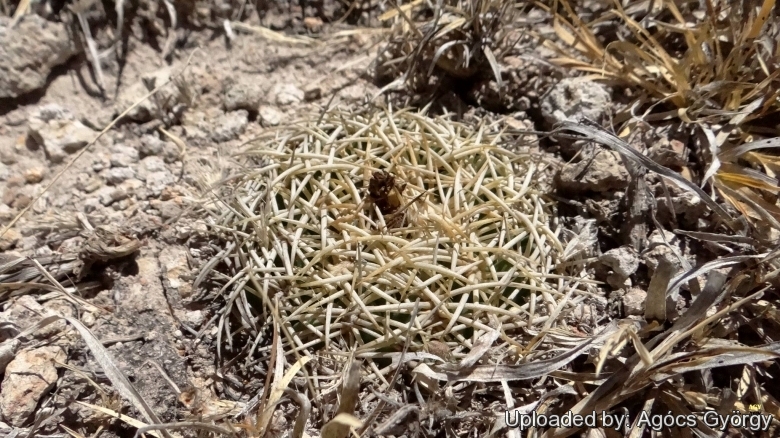
Coryphantha retusa Photo by: Agócs György
Origin and Habitat: Coryphantha retusaSN|2315]]SN|2315]] is endemic to Mexico (Oaxaca, Puebla).
Altitude range: It occurs at elevation of 1,700 to 2,300 metres above sea level.
Habitat: Xerophyllous scrub, open Quercus forest and grasslands on lava soil. Accompanying species can be Mammillaria carneaSN|23756]]SN|23756]], Ferocactus recurvusSN|4280]]SN|4280]], Escontria chiotillaSN|7764]]SN|7764]] and Stenocereus stellatusSN|7945]]SN|7945]]. Little is known about the population size because it is difficult to distinguish Coryphantha retusaSN|2315]]SN|2315]] from other species in the genus. Little is known about the threats to this species because of the taxonomic uncertainty.
Synonyms:
See all synonyms of Coryphantha retusa
back
Accepted name in llifle Database:Coryphantha retusa (Pfeiff.) Britton & RoseCactaceae (Britton & Rose) 4: 38. 1923 [24 Dec 1923] nom. cons. prop.Synonymy: 12
back
Description: Coryphantha retusaSN|3884]]SN|2315]] is a small greyish-green cactus thickly covered with tawny wool. Many of the yellowish-brown spines are curved backward. The flowers are deep yellow and borne from the centre of the plant. It flowers profusely.
Note: Coryphantha retusaSN|2315]]SN|2315]] is difficult to distinguish from Coryphantha pycnacanthaSN|2315]]SN|3884]] as well as other species in the genus. The taxonomy of this species needs further research to determine its status.
Stem: Generally not offsetting, rarely clumping when old. Depressed spherical 5-10 cm in diameter, 3-8 cm tall, with narrowed base and very woolly apex. Epidermis dark green or greyish-green.
Tubercles: Conical, flattened above (retuse), unequally swollen, but variable in width and shape rounded, up to 8 mm tall with abundant wool in the axil and furrow when young, parastichy arrangement: 8-13 (13-21).
Areoles: Oblong 4 x 2 mm wide.
Roots: Fibrous.
Central spines: Absent. (very rarely has 1 central spine )
Radial spines: 6-12 ( to 15) pectinated, 3-4 of them on each side, strong subulate, flattened, curved to the body and slightly downward, radiating the lowest on straight downwards, the 3-5 in the upper part of the areoles thinner needle like. All 14-20 mm long, pale-yellow/white with darker tips later turning grey.
Flowers: Bell shaped, central, up to 4 cm cream or yellow, perianth segment lanceolate,oblong, acute, filaments reddish, anthers yellow, stigma and lobes whitish-yellow.
Blooming season (in habitat): Flowering time is between June and October
Fruits: Olive green, juicy, oblong 30 x 9 mm.
Subspecies, varieties, forms and cultivars of plants belonging to the Coryphantha retusa group
 Coryphantha retusa (Pfeiff.) Britton & Rose: has greyish-green stems covered with tawny wool. The yellowish-brown spines are curved backward. Flowers deep yellow borne from the centre. Distribution: Mexico (Oaxaca, Puebla).
Coryphantha retusa (Pfeiff.) Britton & Rose: has greyish-green stems covered with tawny wool. The yellowish-brown spines are curved backward. Flowers deep yellow borne from the centre. Distribution: Mexico (Oaxaca, Puebla). Coryphantha retusa var. pallidispina Backeb.: has 15 yellowish to pale-grey spines, among them 12 more rigid with thickened bases, the other 3 much thinner. The tubercles are more closely set than the type.
Coryphantha retusa var. pallidispina Backeb.: has 15 yellowish to pale-grey spines, among them 12 more rigid with thickened bases, the other 3 much thinner. The tubercles are more closely set than the type.
Bibliography: Major references and further lectures
1) Edward Anderson “The Cactus family” Timber Press, Incorporated, 2001
2) James Cullen, Sabina G. Knees, H. Suzanne Cubey "The European Garden Flora Flowering Plants: A Manual for the Identification of Plants Cultivated in Europe, Both Out-of-Doors and Under Glass" Cambridge University Press, 11/Aug/2011
3) David R Hunt; Nigel P Taylor; Graham Charles; International Cactaceae Systematics Group. "The New Cactus Lexicon" dh books, 2006
4) N. L. Britton, J. N. Rose “The Cactaceae. Descriptions and Illustrations of Plants of the Cactus Family.” Volume 4, The Carnegie Institution of Washington, Washington 1923
5) Curt Backeberg “Die Cactaceae: Handbuch der Kakteenkunde” Gustav Fischer Verlag, Stuttgart New York 1982–1985
6) Reto Dicht, Adrian Lüthy “Coryphantha: Cacti of Mexico and Southern USA” Springer Science & Business Media, 14 March 2006
7) Arias, S. 2013. Coryphantha retusa. The IUCN Red List of Threatened Species. Version 2015.1. <www.iucnredlist.org>. Downloaded on 08 June 2015.
8) Cecile Hulse Matschat “Mexican Plants for American Gardens” Houghton Mifflin, 1935
9) Urs Eggli, Leonard E. Newton “Etymological Dictionary of Succulent Plant Names.” Springer, Berlin/Heidelberg 2010
10) Reto F. Dicht, Adrian D. Lüthy “Nomina Cactacearum Conservanda sive Rejicienda Proposita.” In: Cactaceae Systematics Initiatives. 10: 19–22 2000.
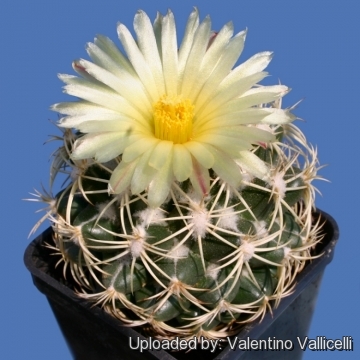 Field number SB544 (Collector Steven Brack), Mitla, Oxaca, Mexico. Photo by: Valentino Vallicelli
Field number SB544 (Collector Steven Brack), Mitla, Oxaca, Mexico. Photo by: Valentino Vallicelli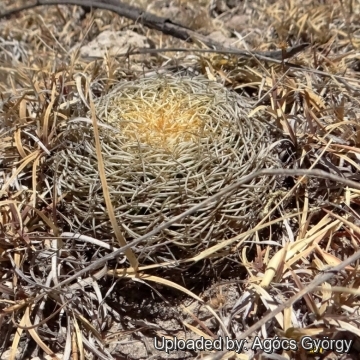 In habitat. Spines are pectinated pale-yellow/white with darker tips later turning grey. Photo by: Agócs György
In habitat. Spines are pectinated pale-yellow/white with darker tips later turning grey. Photo by: Agócs György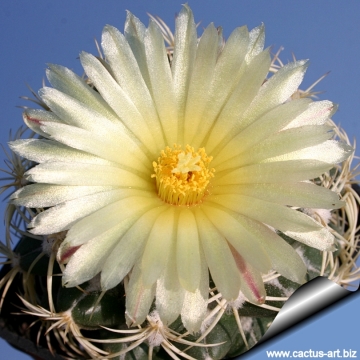 Field number SB544 (Collector Steven Brack), Mitla, Oxaca, Mexico. Photo by: Cactus Art
Field number SB544 (Collector Steven Brack), Mitla, Oxaca, Mexico. Photo by: Cactus Art Coryphantha retusa Photo by: Cactus Art
Coryphantha retusa Photo by: Cactus Art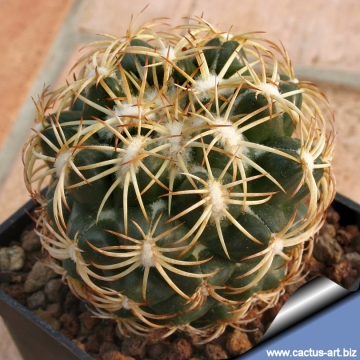 It is a dull-green cactus thickly covered with tawny wool and rounded, flattened above (retuse) tubercles. Photo by: Cactus Art
It is a dull-green cactus thickly covered with tawny wool and rounded, flattened above (retuse) tubercles. Photo by: Cactus Art Habit, among grasses in Mexico. Photo by: Agócs György
Habit, among grasses in Mexico. Photo by: Agócs GyörgyCultivation and Propagation: In culture Coryphantha retusaSN|2315]]SN|2315]] is without problems, but it grows slowly. It does best in slight shade, but does well in full sun, too. It is sensitive to over-watering (rot prone), and needs a very porous soil with good drainage.
It flowers quite early, but needs about 8-12 years to reach its typical, definite aspect. It tolerates fairly low temperatures as long as it is kept dry (hardy to -5° C or less, for short periods of time).
Propagation: Propagation is by seed.
















